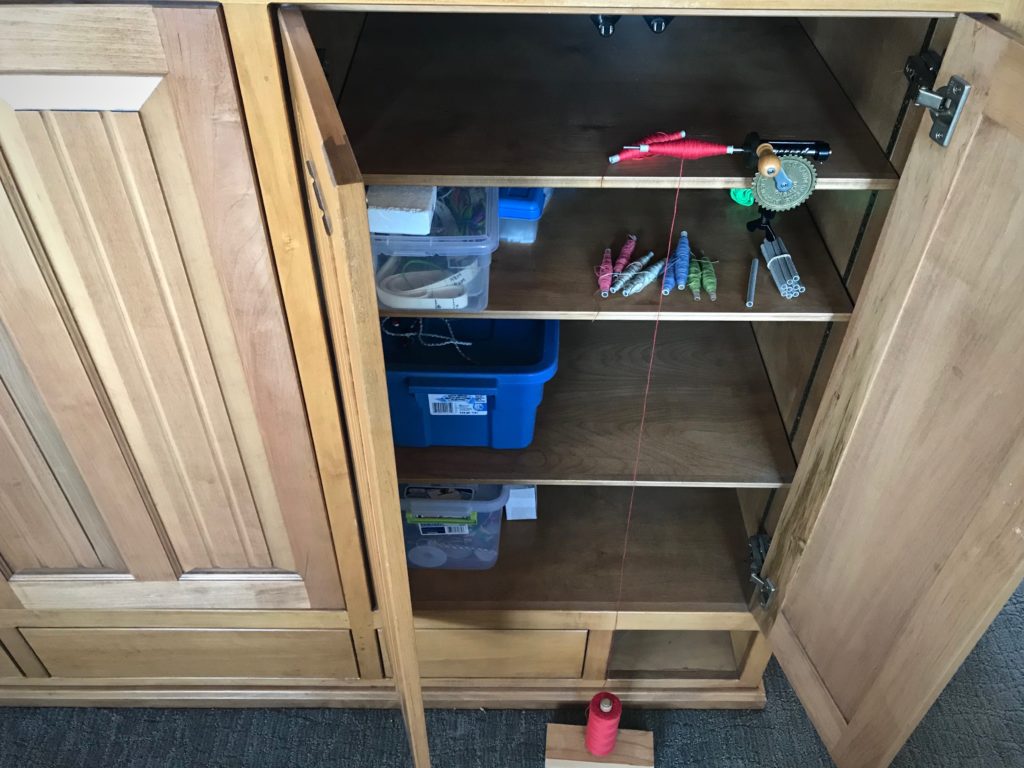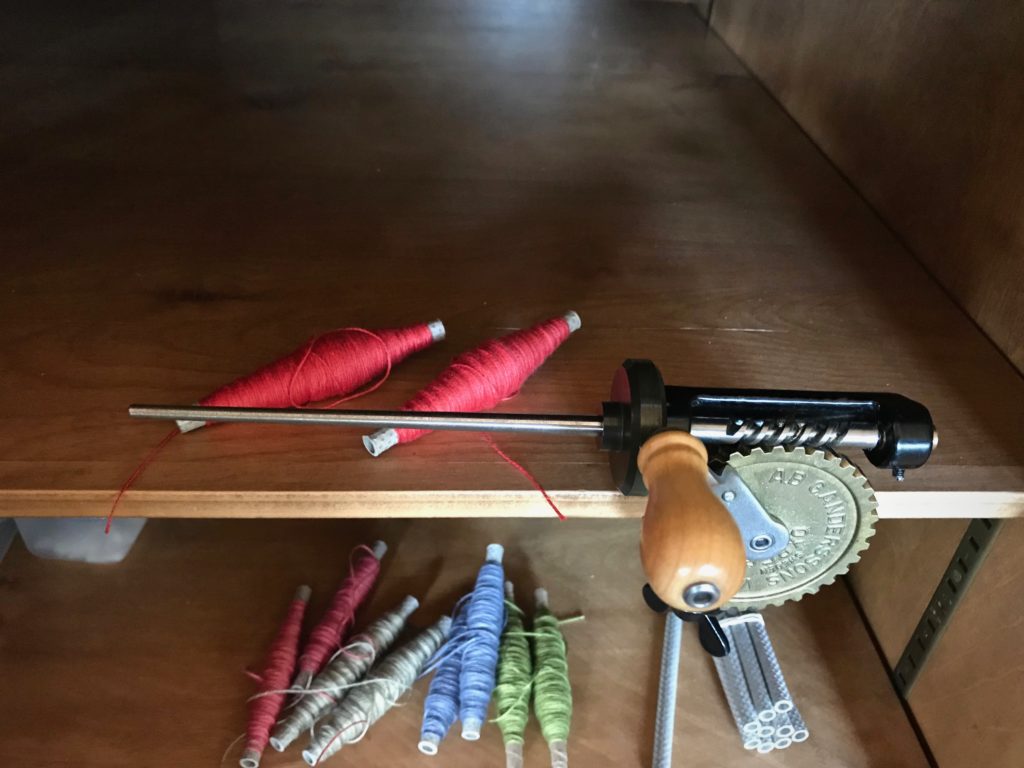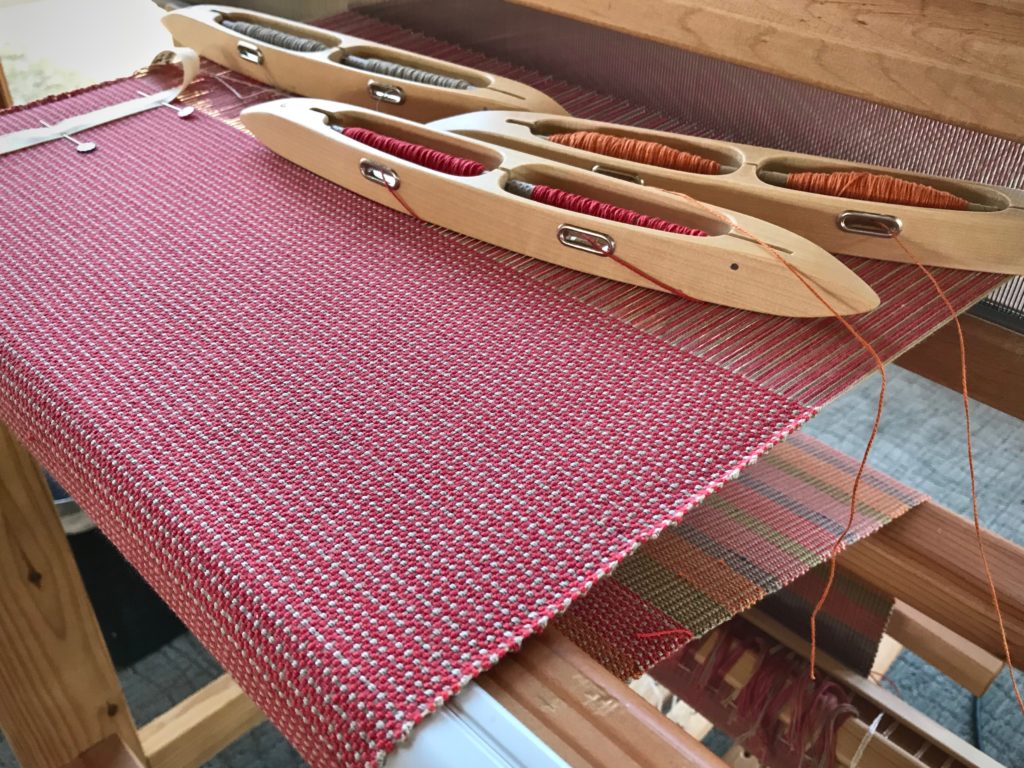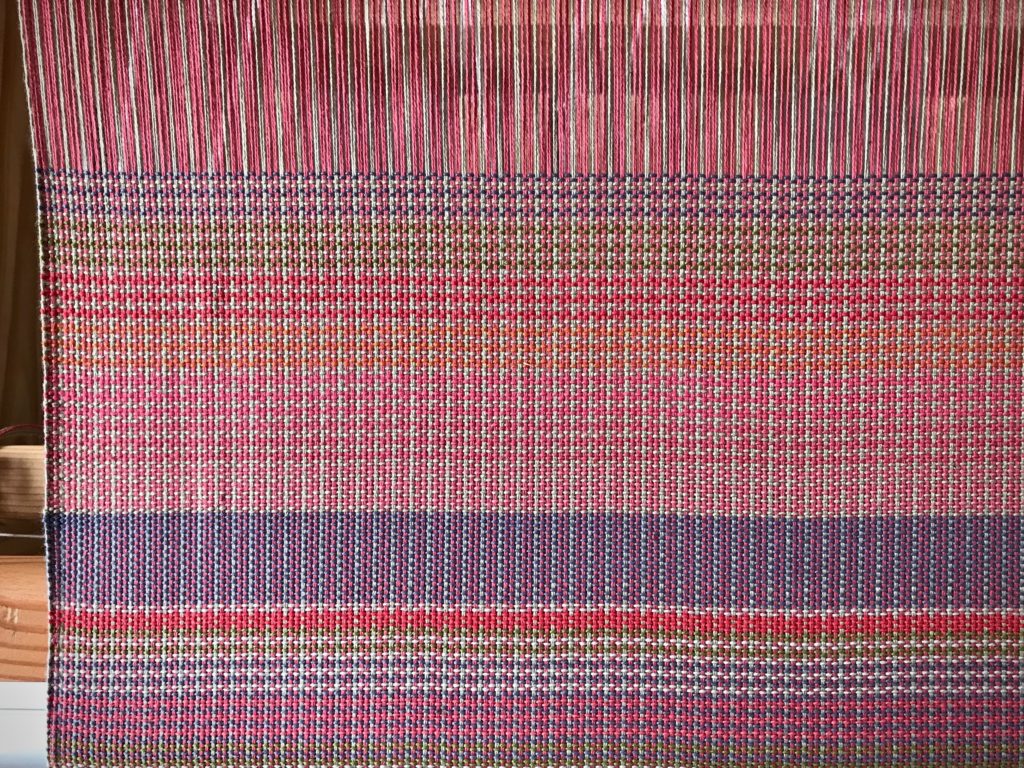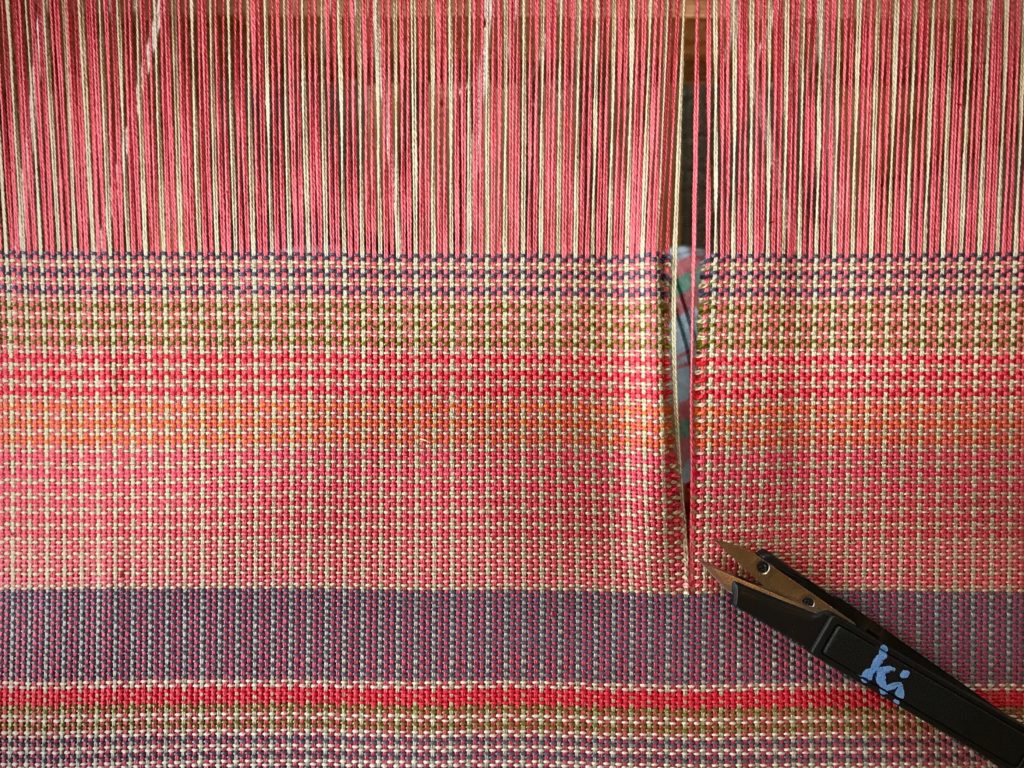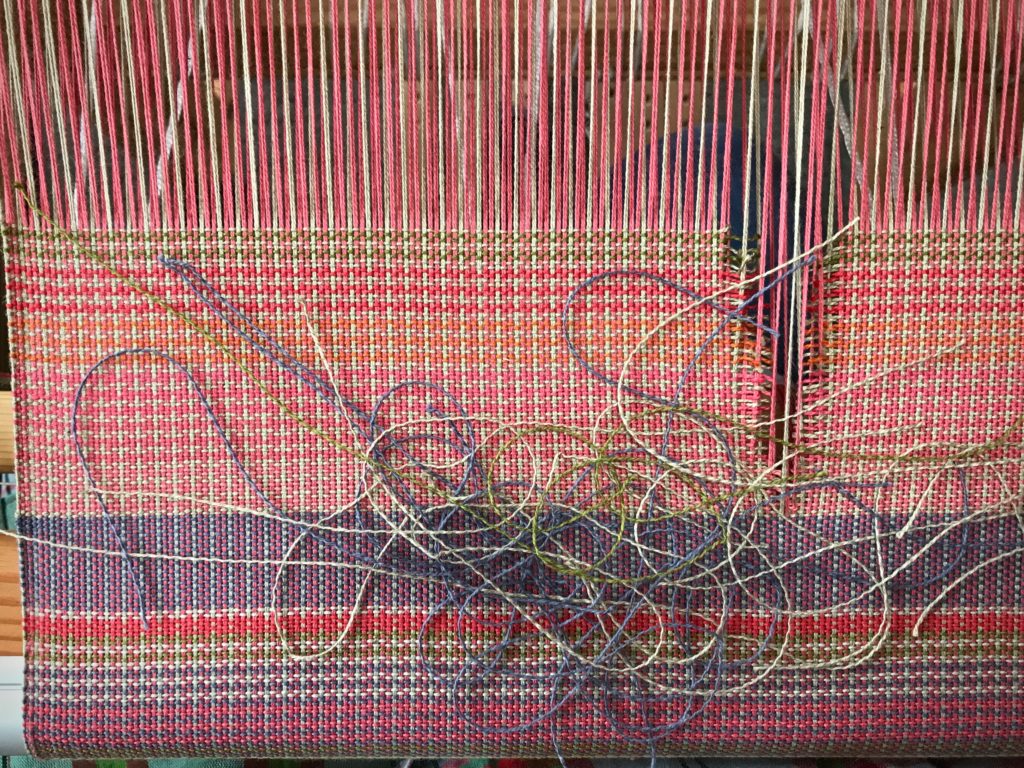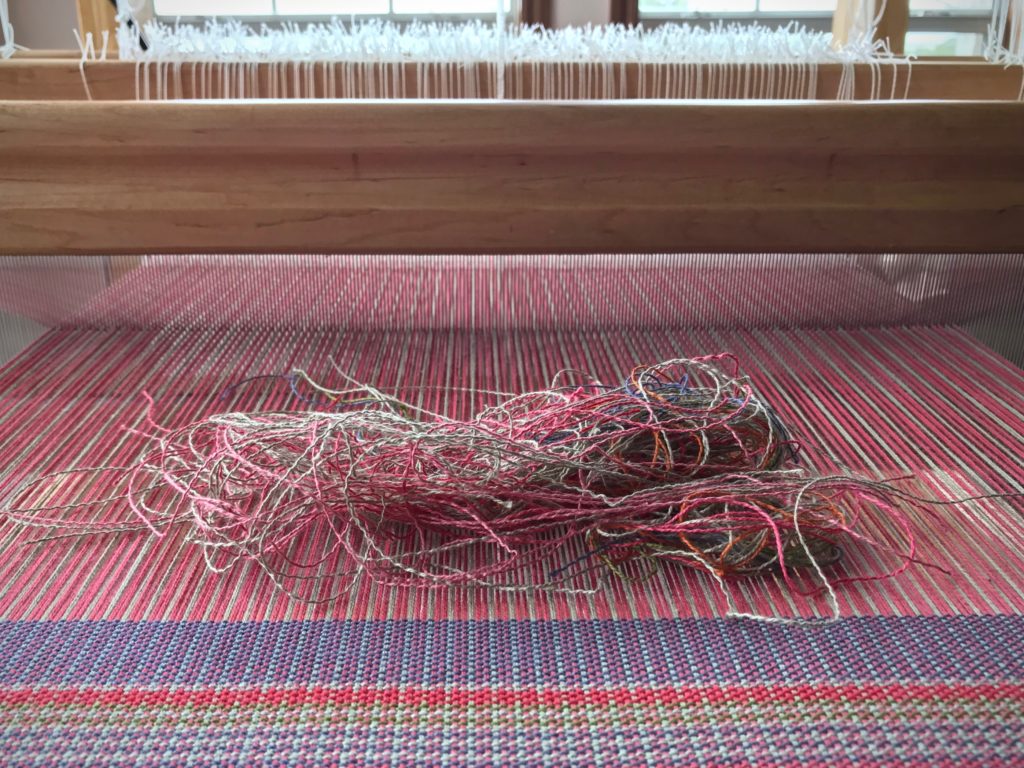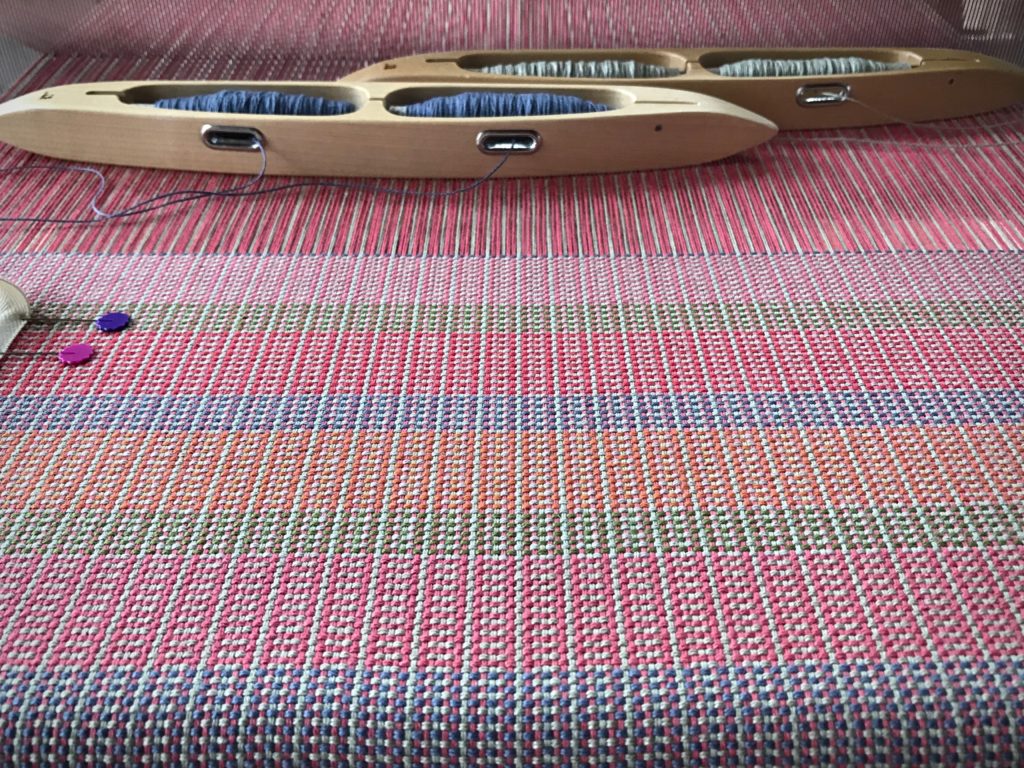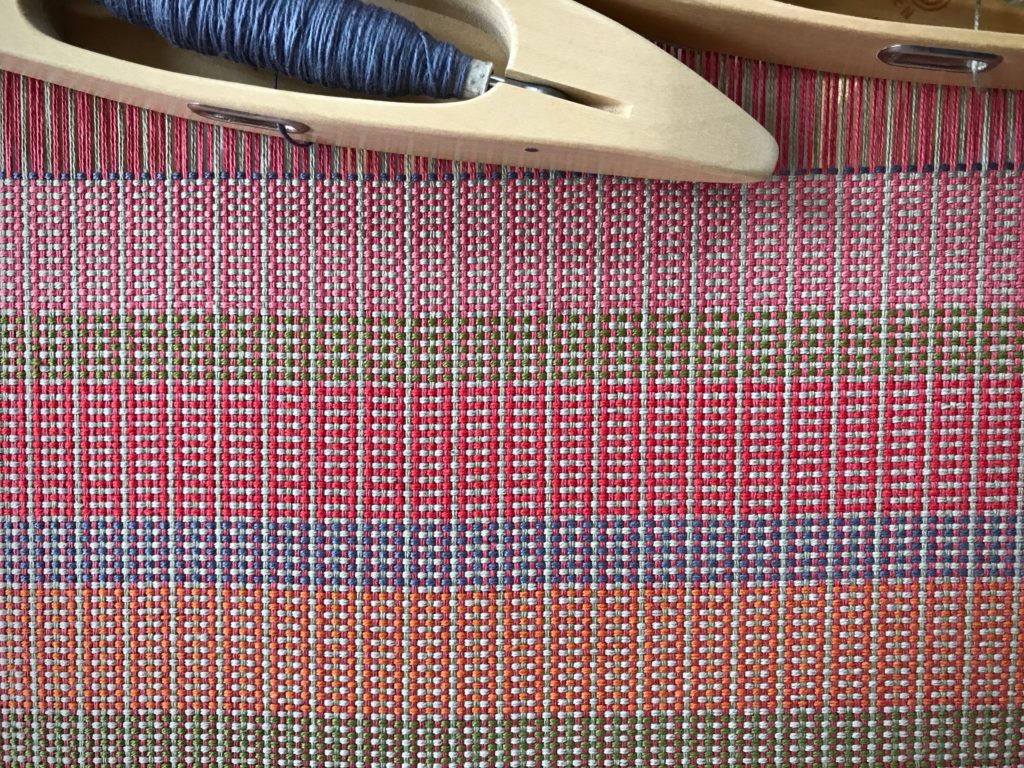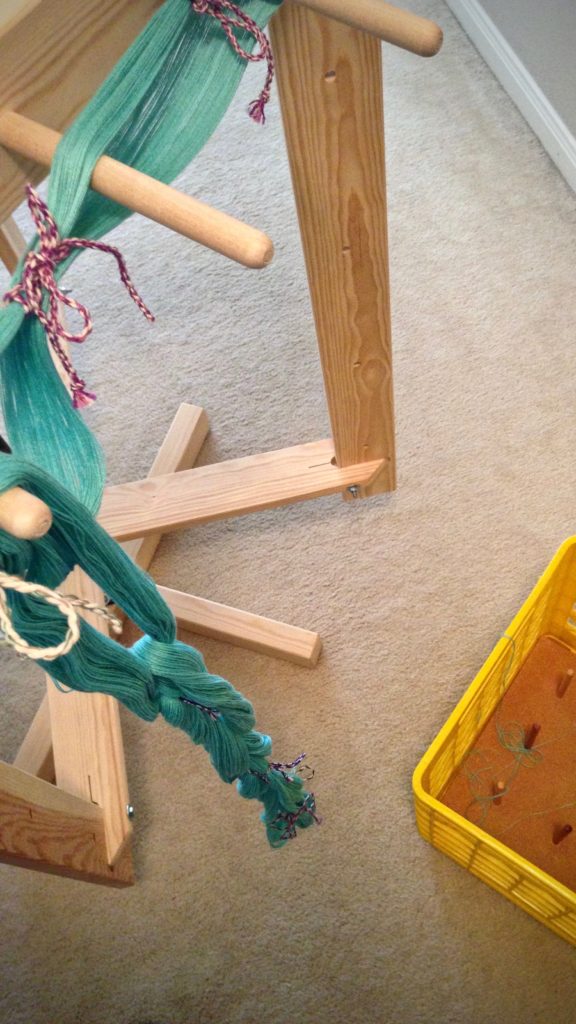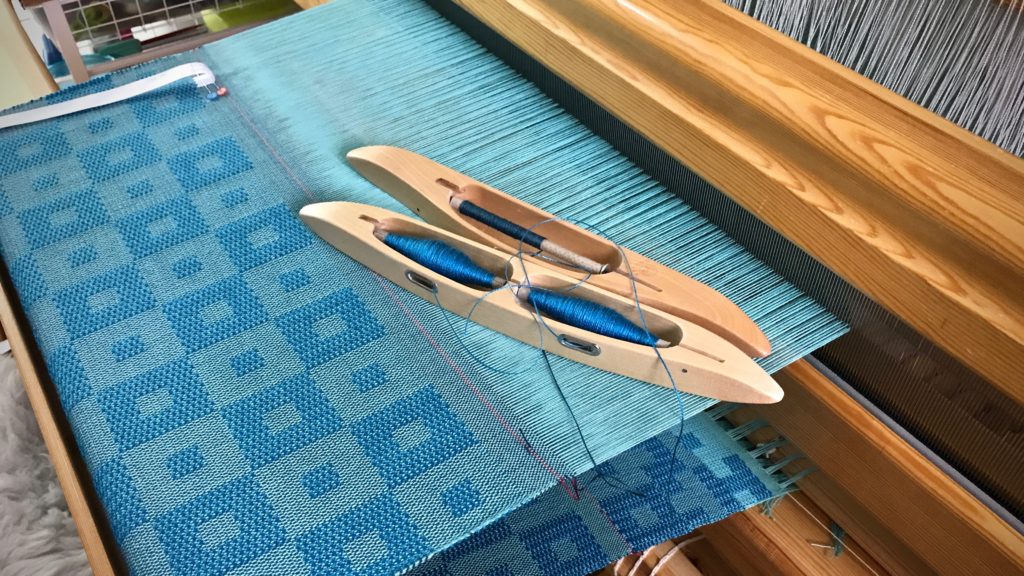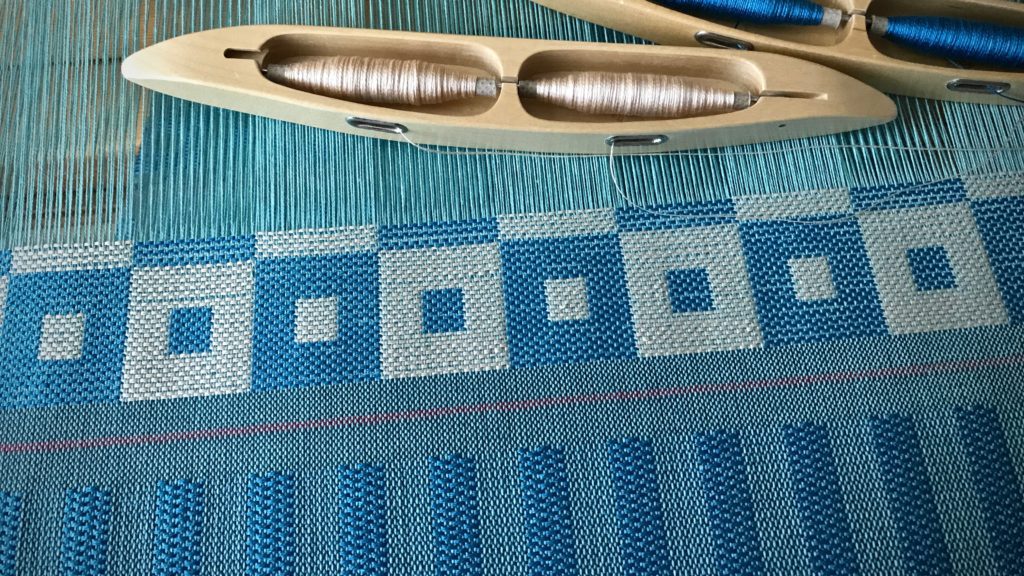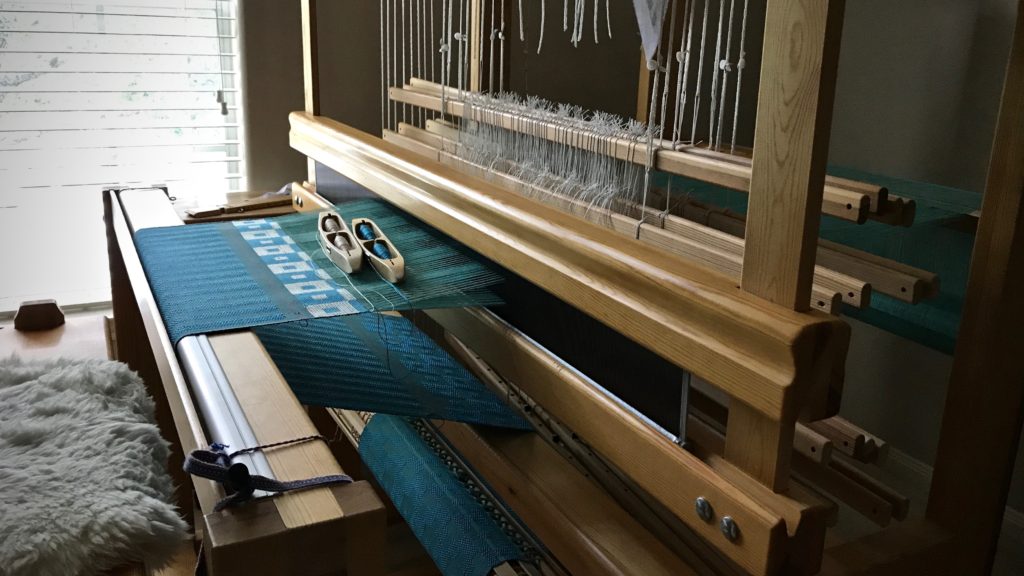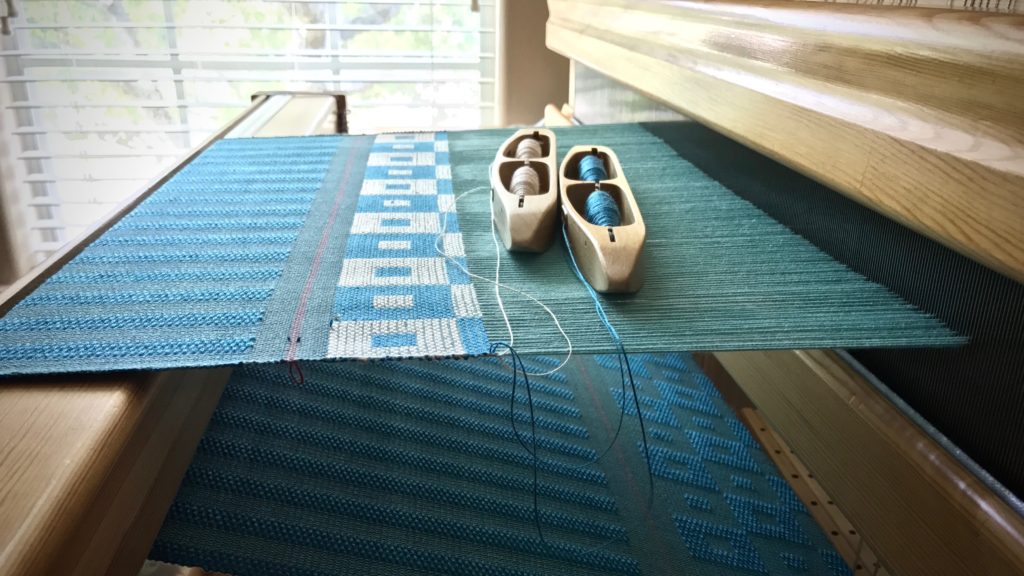I considered making a matching set, but at the loom I get an inclination to explore. Hence, no two placemats are alike. A change in the weft changes everything. New colors emerge! Slate and apple green on a coral warp become periwinkle and avocado. If you look closely, though, you can still see the underlying coral and camel stripes of the warp.
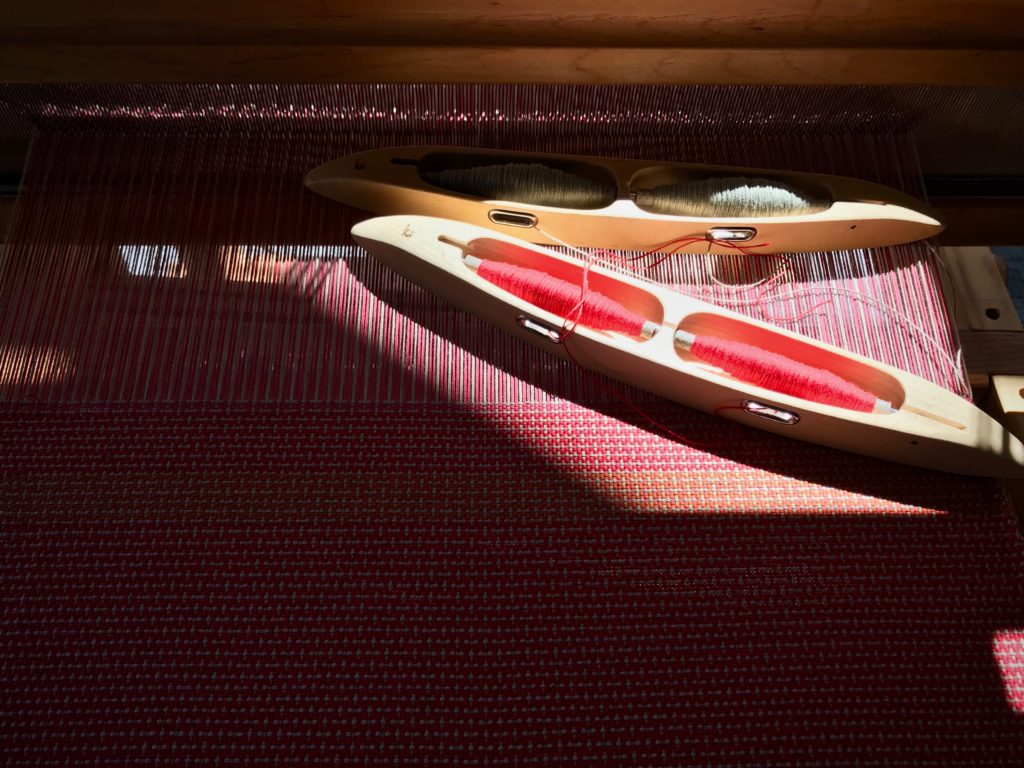
Three double-bobbin shuttles—this is not the easiest way to weave. I am carrying the colors up the selvedge, so it gets tricky when all three shuttles end up on the same side. Nevertheless, this is the joy of weaving a challenge. How and where to set the shuttles down, and which hand picks them up—ever aiming for efficiency. Newly-formed colors and technical pursuits—this is a handweaver’s thrill of discovery!
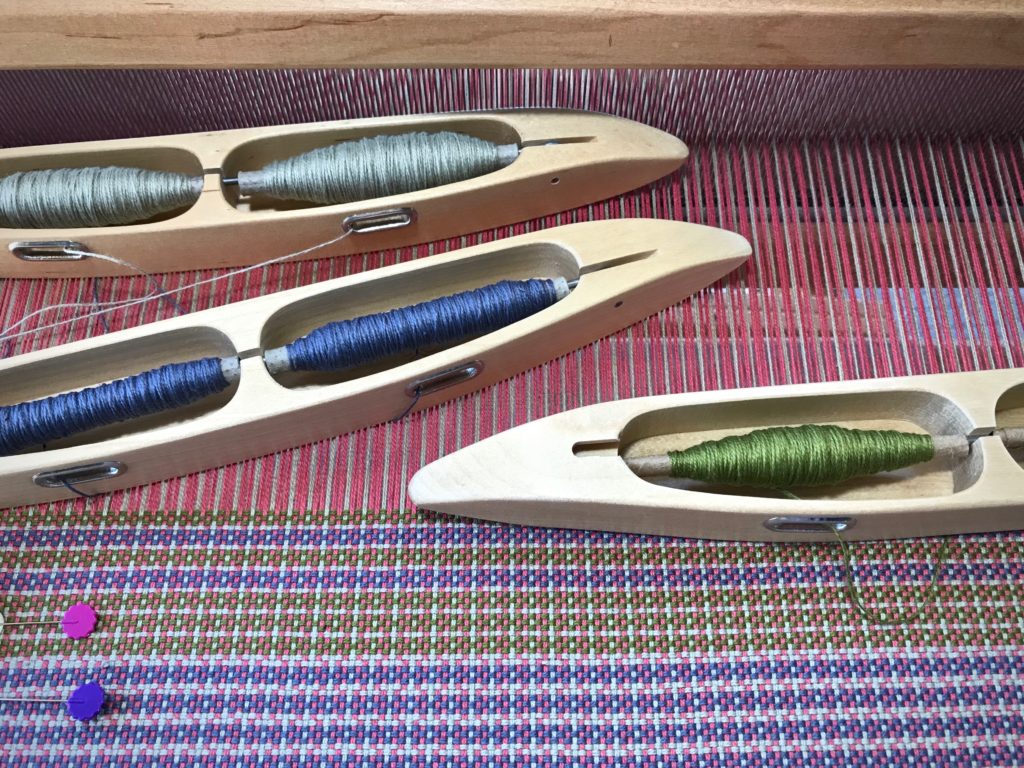
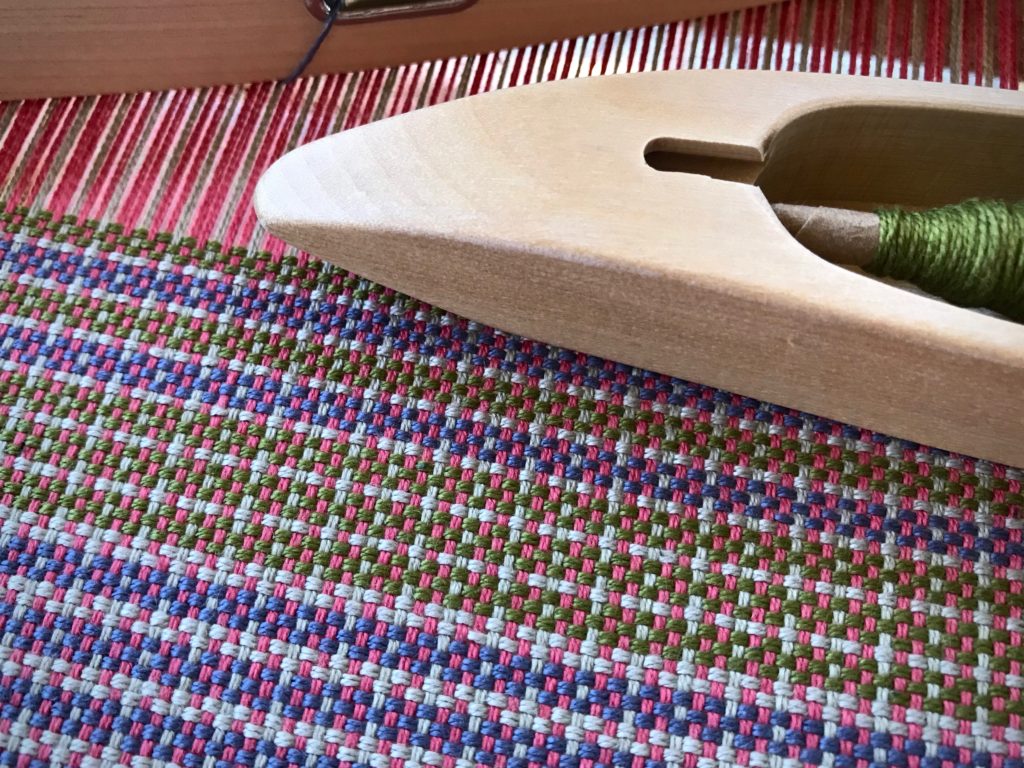
Imagine the thrill of discovery that awaits us in heaven! Love permeates heaven. Like a narrow-striped warp, love is written into the fabric. The environment there is love, where pride and selfishness don’t exist. Blending of colorful personalities will be such as we’ve never seen. All to the glory of our Grand Weaver. And how marvelous that through Christ we’ve been given everything needed to practice that kind of love here and now. Double bobbin shuttles, and all.
May you rise to the challenge.
Love,
Karen

